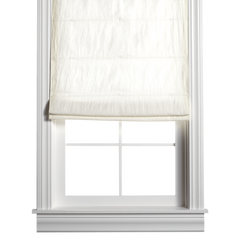We all know the importance that a good night's sleep has on the health and mind. Unfortunately, many of us underestimate the bedroom, and don't give it the treatment it deserves. With a third of our lives spent sleeping, a mindful and calming bedroom environment is vital to creating good rest.
Studies have shown that your sleep environment directly impacts how well you sleep. A variety of factors, ranging from room temperature to decor, affect the quality of one's sleeping environment. We'll help you get a better nights sleep with the following tips.
The bedroom is for sleeping
The bedroom should be a sanctuary, and be seen only as a place for relaxation. Keep work out of the room by removing electronics, including the television, which can be distractions and inhibit sleep. Don't work from bed - allow all association with your bed to relate with sleep.
Understandably, a separate bedroom may not be possible for everyone, especially if you have space constraints. In this case, your bed is your sleep environment, and keep it as such. Divide your workspace and sleeping space like in the photo above.
Make sure you have the right lighting
Avoid blue light at night. While in the daytime, blue light can increase attention spans and brighten one's mood, it confuses your body's circadian rhythms. Keep light dim, and refrain from using electronics for at least an hour before you sleep.
When sleeping, ensure that your room is in complete darkness. Manage light control with blackout draperies and shades keep light and noise out at night, and ensure that you don't wake up too early in the morning.
Bring in relaxing, cool hues
For a relaxing and calming environment, always opt for cool colors in muted or pastel tones. On a psychological level, cooler colors reduce heart rate, slow respiration, and lower blood pressure, all of which contribute to sound sleep.
Temperature and air circulation
The ideal temperature for your bedroom is from 60 - 67 degrees Fahrenheit. Allow air to flow throughout the room by slightly cracking the window open. If it's too cold to do so, consider adding houseplants, like the snake plant which releases oxygen at night, allowing for air filtration.
The sound of silence
The key to a good night's sleep is silence. Consider investing in a white noise machine to eliminate noise, or opt for the cheaper alternative, earplugs. Opt for warm, plush rugs and heavy curtains. These not only help with temperature regulation, they also help by muffling sound.
Symmetry and balance
Symmetry is known to be psychologically soothing and mentally calming, likewise, take this approach when decorating your bedroom. Allow your bed to be the axis around which you decorate to form a sense of balance. As mentioned with color earlier, choose bedding and other decor in cool, soft hues.
Remove the clutter. Purge items that you haven't touched in a while and invest in storage systems. Don't try to fill up your room with too much decor - while decorative throw pillows can be aesthetically pleasing, they get thrown to the side when you sleep. Save them for the sofa.
Decor & essentials
Blackout draperies and shades are essential to any bedroom. They help with external factors like light, noise, and temperature control.
Refrain from carpets and opt for a rug instead. Carpets are dust mite heaven, which can give you allergy-like symptoms.
Pillows should be made from natural materials. If you're into memory foam, then consider a cotton pillow protector which should help decrease the amount of volative organic compounds (which can cause headaches, nausea, etc) emitted.
Mattresses should be changed out every 7-8 years. With a slew of new mattress startups to choose from in a variety of affordable pricepoints, you should have no excuse to switch yours. The proper mattress will allow your body to stay aligned, preventing any unnecessary aches in the morning.












